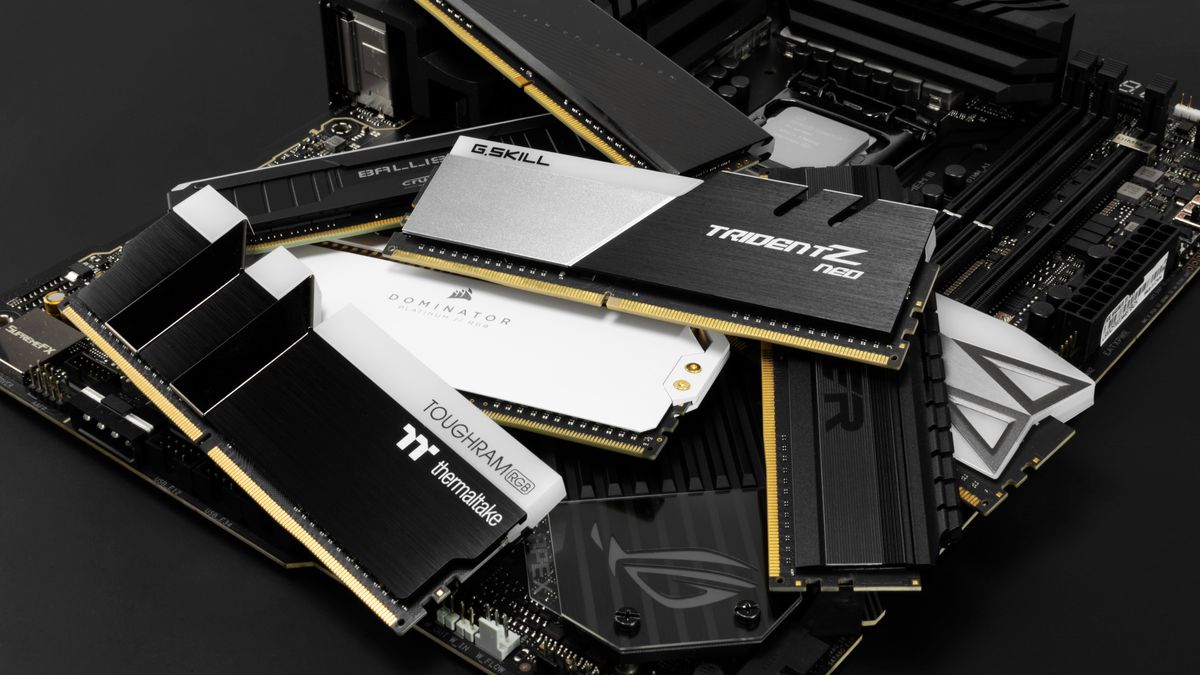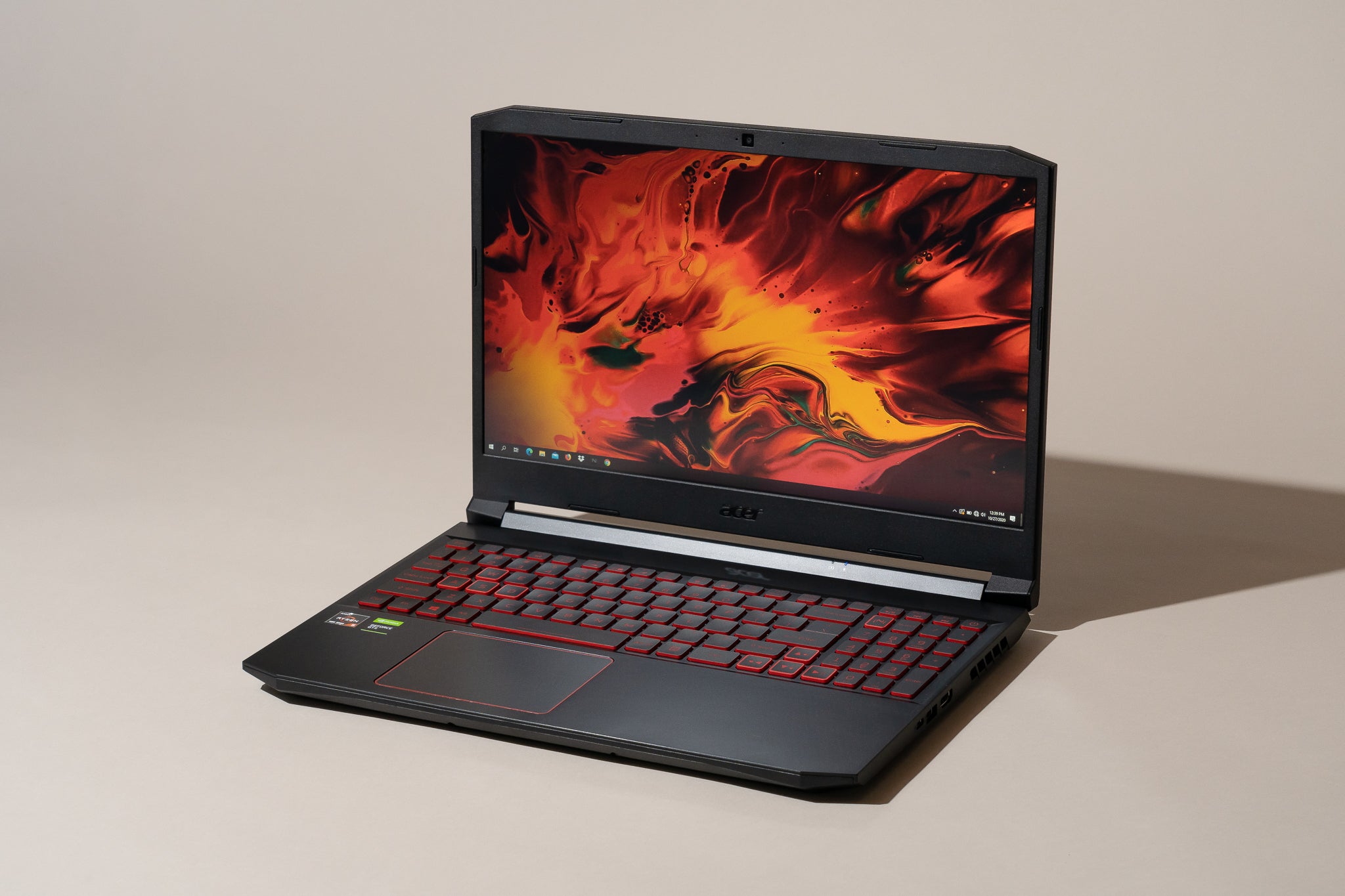Introduction
Welcome to our article discussing the lifespan of RAM, the ever-important component of your computer’s memory system. If you’re curious about how long your RAM typically lasts and what factors can affect its longevity, you’ve come to the right place. RAM (Random Access Memory) plays a crucial role in the performance of your computer, allowing it to quickly access and store data that’s actively being used.
In this article, we’ll delve into the world of RAM and explore the various factors that can influence its lifespan. From the quality and type of the RAM modules to frequency of usage and operating temperatures, we’ll cover it all. We’ll also discuss signs of wear and tear to watch out for and provide some tips on how to extend the lifespan of your RAM. But before we dive into all that, let’s start with a brief explanation of what RAM is and why it’s important.
RAM is a type of computer memory that serves as a temporary storage space for data that the CPU (Central Processing Unit) needs to access quickly. Unlike your computer’s hard drive, which provides long-term storage, RAM provides fast and volatile storage. This means that the data stored in RAM is lost when the computer is powered off, which is why it’s referred to as “volatile” memory.
The role of RAM in your computer’s performance cannot be overstated. The more RAM your system has, the more data it can store and access simultaneously, resulting in smoother multitasking and faster application loading times. Insufficient RAM can lead to sluggish performance, frequent freezing, and crashes.
Now that you have a basic understanding of what RAM is and its importance, let’s dive into the various factors that can affect its lifespan. By understanding these factors and following some best practices, you can ensure that your RAM lasts for as long as possible, saving you the hassle and expense of frequent replacements.
What is RAM?
Before delving into the lifespan of RAM, it’s important to have a clear understanding of what RAM actually is. RAM, or Random Access Memory, is a type of computer memory that is used to store data that the CPU (Central Processing Unit) can access quickly. It serves as a temporary storage space for active data and instructions that need to be accessed by the CPU in real-time.
RAM is an essential component of any computer system. It allows for quick and efficient data retrieval and is crucial for the smooth operation of various applications and processes. When you open a program or file on your computer, the necessary data is loaded from your storage device (such as a hard drive or solid-state drive) into the RAM. This data is then accessed and processed by the CPU, giving you the ability to interact with the program or file in real-time.
Unlike permanent storage devices like hard drives or SSDs, RAM is volatile memory. This means that the data stored in RAM is temporary and is lost when the computer is powered off or restarted. The advantage of volatile memory is its speed and efficiency in data access. Since RAM is much faster than storage devices, it allows for quick data retrieval, resulting in faster application loading times and smoother multitasking.
RAM modules are physical hardware components that come in various sizes, typically measured in gigabytes (GB) or terabytes (TB). The amount of RAM installed in a computer system directly impacts its performance. A system with more RAM can handle a larger volume of data and perform tasks more efficiently, minimizing delays and slowdowns.
Overall, RAM is a critical component in a computer system, responsible for storing and supplying data to the CPU for real-time processing. Its speed and capacity significantly impact the overall performance and efficiency of a computer, making it an integral part of any computing device.
Factors Affecting RAM Lifespan
The lifespan of RAM can vary depending on several factors. Understanding these factors can help you ensure that your RAM remains in good condition for as long as possible. Here are some of the key factors that can affect the lifespan of your RAM:
- Quality of RAM: The quality of the RAM modules you purchase can have a significant impact on their lifespan. Higher-quality RAM modules are typically designed and manufactured to meet stricter standards, resulting in better durability and longer lifespan.
- Type of RAM: Different types of RAM, such as DDR3 and DDR4, have different capabilities and specifications. As technology advances, newer RAM types are introduced, offering improved performance and efficiency. However, it’s important to note that older RAM types may have a shorter lifespan compared to newer ones.
- Frequency of Usage: The frequency at which you use your computer can also impact the lifespan of your RAM. Constantly running memory-intensive applications or having your computer turned on for extended periods of time can put more strain on the RAM modules, potentially shortening their lifespan.
- Operating Temperatures: High temperatures can be detrimental to electronic components, including RAM. Excessive heat can cause the RAM modules to degrade faster and potentially result in data corruption. It’s important to ensure proper airflow and cooling within your computer case to keep the RAM temperature within acceptable limits.
- Overclocking: Overclocking, which involves increasing the operating speed of your RAM beyond its default specifications, can significantly impact its lifespan. While overclocking can provide a performance boost, it also generates more heat and places additional stress on the RAM, potentially reducing its longevity.
It’s worth noting that these factors can individually or collectively affect the lifespan of your RAM. For example, using low-quality RAM modules and overclocking them while running memory-intensive applications can significantly shorten their lifespan.
By being mindful of these factors, you can take steps to prolong the lifespan of your RAM. Investing in high-quality RAM modules, using them within their specified operating parameters, and maintaining optimal operating temperatures are some of the ways you can ensure that your RAM performs optimally and lasts longer.
Quality of RAM
The quality of RAM modules can play a crucial role in determining their lifespan. When it comes to purchasing RAM, opting for higher-quality modules can greatly benefit your computer’s performance and longevity. Here are some important factors to consider when assessing the quality of RAM:
- Brand Reputation: Choosing RAM modules from reputable and well-established brands is a good starting point. Established brands are more likely to prioritize quality control and adhere to higher manufacturing standards, resulting in more reliable RAM modules.
- Component Selection and Manufacturing: High-quality RAM modules utilize carefully selected components and follow strict manufacturing processes. This includes sourcing premium memory chips, employing advanced PCB (Printed Circuit Board) designs, and using superior materials for the modules’ construction. Robust manufacturing practices help ensure the durability and longevity of the RAM.
- Rigorous Testing and Certification: Manufacturers that subject their RAM modules to rigorous testing, such as stress tests and compatibility checks, demonstrate a commitment to ensuring the reliability and stability of their products. Look for RAM modules that have been certified by organizations like JEDEC (Joint Electron Device Engineering Council) for compliance with industry standards.
- Warranty and Customer Support: A solid warranty and responsive customer support indicate that the manufacturer stands behind their product. A longer warranty period can provide peace of mind, as it suggests the manufacturer’s confidence in the durability and longevity of their RAM modules.
Investing in high-quality RAM modules can offer several advantages. Firstly, high-quality RAM often performs better, delivering superior speed, efficiency, and stability. This translates into smoother multitasking, faster data processing, and improved overall system performance. Additionally, high-quality RAM modules are less prone to errors, data corruption, and even physical damage, which can result in a longer lifespan.
Lower-quality RAM modules, on the other hand, may have inconsistent performance, compatibility issues, or higher failure rates. In some cases, they may even have shorter lifespans due to suboptimal manufacturing processes or lower-grade components.
While high-quality RAM modules may come at a slightly higher price, the long-term benefits far outweigh the initial cost. Purchasing RAM from reputable manufacturers with a proven track record of quality can save you from potential headaches and the need for frequent replacements.
When it comes to RAM, investing in quality pays off. Opting for reliable, well-manufactured modules from trusted brands can ensure that your computer runs smoothly and efficiently while maximizing the lifespan of your RAM.
Type of RAM
The type of RAM you choose for your computer can have an impact on its performance and lifespan. Different generations and types of RAM offer varying capabilities, speeds, and compatibility. Understanding the different types of RAM available can help you make an informed decision. Here are some of the common types of RAM:
- DDR3: DDR3 (Double Data Rate 3) RAM was widely used in computers from the late 2000s to the early 2010s. It offers decent performance and is compatible with many older systems. However, DDR3 has lower data transfer rates compared to newer RAM types, which may limit its performance in high-demand applications.
- DDR4: DDR4 (Double Data Rate 4) RAM is the current mainstream standard for modern computers. It offers higher data transfer rates, improved energy efficiency, and increased memory capacity compared to DDR3. DDR4 RAM is compatible with newer motherboards, and its higher performance can benefit applications that require large data bandwidth.
- DDR4 SDRAM: DDR4 SDRAM (Synchronous Dynamic Random-Access Memory) is a subtype of DDR4 RAM. It has the same benefits as DDR4 but also incorporates additional features like error-correcting code (ECC) for enhanced data integrity and reliability. DDR4 SDRAM is commonly used in servers, workstations, and high-end computing systems.
- LPDDR4: LPDDR4 (Low-Power Double Data Rate 4) RAM is designed specifically for mobile devices like smartphones, tablets, and ultraportable laptops. It offers similar performance to DDR4 but operates at lower voltages, resulting in improved power efficiency and longer battery life.
- DDR5 (Upcoming): DDR5 RAM is the next generation of RAM technology, promising even higher data transfer rates, increased memory capacities, and improved power efficiency. It is expected to become more prevalent in the coming years, delivering enhanced performance for both consumer and enterprise applications.
When choosing RAM for your computer, it’s important to consider the compatibility of the RAM type with your motherboard and CPU. Different generations of RAM are not interchangeable, and each motherboard has specific requirements for RAM type, speed, and capacity.
While newer RAM types like DDR4 offer improved performance and efficiency, older RAM types like DDR3 can still be suitable for certain systems and applications. It’s essential to consult your computer’s specifications or motherboard manual to ensure that you select the appropriate RAM type.
Upgrading to a newer RAM type may provide performance benefits, especially if you work with resource-intensive applications or require seamless multitasking. However, it’s crucial to note that the lifespan of older RAM types may be shorter compared to newer ones, as technological advancements in RAM design and manufacturing contribute to improved durability.
Ultimately, choosing the right type of RAM for your computer depends on your system’s requirements and compatibility. Consider the performance needs of your applications, the capabilities of your motherboard, and your budget when selecting the most suitable RAM type.
Frequency of Usage
The frequency at which you use your computer can have an impact on the lifespan of your RAM. The more you use your computer, the greater the strain on the RAM modules, which can ultimately affect their longevity. Here are a few factors related to the frequency of usage that can affect the lifespan of your RAM:
- Duration of Use: Extended periods of uninterrupted computer usage can put continuous strain on the RAM modules. The longer your computer remains powered on and actively running applications, the more stress it places on the RAM. Over time, this increased usage can potentially lead to faster degradation and a shorter lifespan for the RAM modules.
- Memory-Intensive Applications: Running memory-intensive applications, such as video editing software, virtual machines, or advanced 3D games, can significantly impact the lifespan of your RAM. These applications often require a large amount of RAM to function smoothly. Constantly pushing the limits of your RAM’s capacity and bandwidth may result in quicker wear and tear.
- Resource-Heavy Multitasking: If you frequently perform tasks that require extensive multitasking, such as running multiple applications simultaneously or working with large datasets, it can strain your RAM. The more applications and processes competing for the available RAM, the higher the workload on the RAM modules, potentially shortening their lifespan.
- Maintenance and Cleanup: Regularly performing computer maintenance, such as clearing temporary files, uninstalling unnecessary software, and running disk cleanup utilities, can help minimize the strain on your RAM. By keeping your system clean and optimized, you can reduce the load on the RAM and extend its lifespan.
While it’s impossible to avoid using your computer altogether, being mindful of the frequency and intensity of your computer usage can help preserve the lifespan of your RAM. Balancing your usage patterns, taking breaks to allow your computer to cool down, and avoiding overloading the RAM with excessive multitasking can all contribute to the health and longevity of your RAM modules.
If you regularly use memory-intensive applications or engage in resource-heavy multitasking, it’s worth considering upgrading your RAM to a higher capacity. This can help alleviate the strain on the existing modules and provide smoother performance.
Additionally, closely monitoring your system’s performance, such as RAM usage and temperature, can provide early indications of potential issues. Monitoring tools and software can help you identify if your RAM is operating within acceptable limits and if any maintenance or upgrades are necessary.
By being mindful of the frequency and intensity of your computer usage, as well as implementing proper maintenance practices, you can help extend the lifespan of your RAM modules and ensure optimal performance for years to come.
Operating Temperatures
The operating temperature of your RAM can have a significant impact on its lifespan. Excessive heat can accelerate the degradation of your RAM modules, potentially leading to performance issues and even permanent damage. Understanding and managing the operating temperatures of your computer can help ensure the longevity of your RAM. Here’s why operating temperatures matter and what you can do to mitigate any potential risks:
RAM modules, like other electronic components, generate heat during operation. This heat is usually dissipated through heat sinks or heat spreaders attached to the RAM modules. However, high ambient temperatures or inadequate cooling within the computer case can cause the temperature to rise above optimal levels. Extended periods of high temperatures can cause the RAM modules to degrade faster and may even result in data corruption.
High temperatures can contribute to several issues that affect the lifespan and performance of your RAM:
- Thermal Expansion: When RAM modules heat up, they expand slightly due to thermal expansion. Over time, frequent expansion and contraction can lead to stress on the solder joints and connections, potentially causing connections to weaken or break. This can result in intermittent connectivity issues or complete failure of the RAM module.
- Electromigration: High temperatures can accelerate a phenomenon known as “electromigration.” Electromigration refers to the movement of metal atoms within the conductive traces of the RAM module due to the electrical current passing through them. This movement can cause damage to the trace lines over time, leading to electrical failures and data corruption.
- Reduced Stability and Speed: When RAM operates in high temperatures, the electrical resistance of the circuitry may increase. This resistance can lead to reduced signal integrity and slower data transfer rates. As a result, your computer’s performance may be negatively affected, and you may experience slower application loading times and system responsiveness.
To mitigate the risks associated with high operating temperatures, consider the following steps:
- Proper Airflow and Cooling: Ensure that your computer case has sufficient airflow and cooling mechanisms in place. This includes proper cable management, ensuring that fans are clean and functioning correctly, and considering additional cooling solutions like additional fans or liquid cooling systems for more demanding applications.
- Optimal Ambient Temperature: Keep your computer in an environment with a comfortable ambient temperature. Avoid placing your computer in direct sunlight or near heat sources. Excessive heat in the surrounding environment can make it harder for the computer’s cooling system to dissipate heat effectively.
- Regular Cleaning: Dust and debris can accumulate on heat sinks and cooling fans, impeding airflow and causing the system to run hotter. Regularly clean the inside of your computer case using compressed air or appropriate cleaning tools to remove any accumulated dust.
Monitoring the temperatures of your computer components using software tools can also provide valuable insights. Keep an eye on the temperatures of your RAM modules and take action if temperatures consistently exceed recommended levels.
By maintaining optimal operating temperatures and ensuring proper cooling, you can help prolong the lifespan of your RAM modules and maintain optimal performance for your computer system.
Overclocking
Overclocking refers to the process of running computer components, including RAM, at speeds higher than their default specifications. While overclocking can provide a performance boost, it can also impact the lifespan and stability of your RAM modules. Here are some key considerations when it comes to overclocking your RAM:
Overclocking RAM involves increasing its operating frequency and/or timings to achieve faster data transfer rates. By pushing your RAM beyond its default settings, you can potentially unlock additional performance and improve the responsiveness of your system. However, it’s important to note that overclocking can generate additional heat and place extra stress on the RAM modules.
Here are some factors to consider when overclocking your RAM:
- Compatibility: Not all RAM modules are designed to overclock. Some RAM modules may have limited overclocking potential or might not be compatible with certain motherboards or CPUs. It’s important to consult your RAM manufacturer’s specifications and ensure that your hardware components can support overclocking before attempting it.
- Heat Generation: Overclocking RAM generates additional heat, as the modules are working at higher frequencies and voltages. Increased heat can degrade the lifespan and stability of the RAM modules. To counter this, ensuring proper cooling for your system becomes even more critical; adequate airflow and efficient heat dissipation are essential to prevent potential issues.
- Voltage and Stability: Overclocking often requires increasing the voltage supplied to the RAM modules. While higher voltage can enable better stability at higher frequencies, it can also have adverse effects on the lifespan of the RAM. It’s essential to be cautious when increasing voltage and monitor the system for stability issues, such as crashes or data corruption.
- Testing and Tweaking: When overclocking RAM, it’s important to perform thorough testing and tweaking to ensure stability. Stress testing tools like Memtest86 or Prime95 can help assess the stability of the overclocked RAM. It may require adjusting settings, such as timings or voltage, to find the optimal balance between performance and stability.
It’s essential to be aware that overclocking RAM voids the warranty of most RAM manufacturers. Overclocking places additional stress on the RAM modules and can potentially reduce their lifespan. If you choose to overclock your RAM, it should be done with caution and at your own risk.
While overclocking can offer performance benefits, it’s important to weigh the potential gains against the risks involved. If you have a need for higher performance and are willing to accept the potential consequences, then overclocking your RAM may be worth exploring. However, if system stability and longevity are your priorities, it is advisable to keep your RAM running at its default specifications.
Remember, every system is unique, and the overclocking potential of RAM may vary. It’s crucial to research thoroughly and follow reliable resources when attempting to overclock your RAM.
Signs of RAM Wear and Tear
Like any other electronic component, RAM modules can experience wear and tear over time. Recognizing the signs of RAM degradation can help you identify potential issues and take appropriate measures to address them. Here are some common signs that indicate your RAM may be experiencing wear and tear:
- Frequent System Crashes: If you notice your computer frequently crashing, experiencing random restarts, or encountering the “blue screen of death” (BSOD), it could be an indication of faulty RAM. RAM with degraded performance or damaged modules can cause system instability and crashes.
- Memory Errors and Data Corruption: Memory errors or data corruption can manifest in various ways, such as files becoming corrupted, applications crashing or freezing, or unusual error messages appearing. These problems may indicate that your RAM is no longer functioning properly and may need to be replaced.
- Slow Performance or Lag: RAM issues can significantly impact the overall performance of your computer. If you notice unexplained slowdowns, sluggishness, or significant lag when running applications or multitasking, it could be a sign that your RAM is struggling to meet the demands being placed on it.
- Boot and Startup Issues: RAM problems can cause issues during the boot process. If your computer takes an abnormally long time to boot or gets stuck on the loading screen, it may indicate RAM-related issues. Similarly, frequent system freeze-ups or unresponsive behavior during startup can also be attributed to faulty RAM.
- Unusual System Behavior: RAM problems can manifest in various unusual ways. You may encounter unexpected system freezes, files disappearing or becoming corrupted, or even strange graphical artifacts appearing on your screen. These atypical behaviors suggest that your RAM is experiencing issues.
Keep in mind that the symptoms mentioned above can also be caused by other factors, such as software conflicts, driver issues, or hardware problems unrelated to the RAM. Therefore, it’s essential to perform thorough troubleshooting and diagnostics to pinpoint the exact cause of the issues you’re experiencing.
If you suspect that your RAM is the culprit behind these symptoms, there are several steps you can take to verify and resolve the issue. You can try reseating the RAM modules in their slots, updating your system’s BIOS or firmware, running memory diagnostic tools, or even replacing the RAM modules entirely if necessary.
Regularly monitoring your computer’s performance, running system diagnostics, and keeping your hardware up to date can help identify signs of RAM wear and tear early on. Addressing these issues promptly can help prevent further problems and ensure the optimal performance and longevity of your RAM.
Extending the Lifespan of RAM
If you want to maximize the longevity of your RAM modules and ensure optimal performance, there are several steps you can take to extend their lifespan. By following these best practices, you can help keep your RAM in good health for as long as possible. Here are some tips to help you extend the lifespan of your RAM:
- Use High-Quality RAM: Investing in high-quality RAM modules from reputable manufacturers can significantly improve their durability and lifespan. High-quality RAM is often built with better components and undergoes rigorous testing, ensuring long-term stability and performance.
- Practice Proper Handling: When installing or removing RAM modules, handle them with care, avoiding excessive force or bending. Electrostatic discharge (ESD) can also damage the sensitive components of RAM, so it’s essential to ground yourself before handling RAM modules by touching a grounded object or using an anti-static wristband.
- Ensure Proper Cooling: Keep your computer adequately cooled to maintain optimal operating temperatures for your RAM modules. Good airflow, clean fans, and proper cable management can help dissipate heat effectively and prevent overheating, which can contribute to RAM degradation.
- Avoid Overclocking: While overclocking can provide performance gains, it can also reduce the lifespan of your RAM modules. Overclocking generates additional heat and places increased stress on the RAM components. If you prioritize longevity over maximum performance, it’s advisable to avoid or minimize overclocking.
- Regularly Clean Your System: Dust and debris can accumulate inside your computer case over time, restricting airflow and causing components to heat up. Regularly clean your computer, paying attention to air vents, fans, and heat sinks to prevent excessive heat buildup, which can affect the lifespan of your RAM.
- Perform Responsible Usage Practices: Avoid subjecting your RAM modules to extreme usage conditions. While RAM is designed to handle intensive tasks, excessive strain or continuous use without adequate cooling can contribute to premature degradation. Balance your usage patterns, give your computer breaks, and ensure proper cooling to minimize stress on your RAM.
- Keep Software and Drivers Updated: Regularly updating your operating system, drivers, and firmware can help ensure compatibility, stability, and optimal performance with your RAM modules. Outdated software or drivers can sometimes cause memory-related issues, so staying up to date is important.
By following these practices, you can help maximize the lifespan of your RAM modules, ensuring consistent performance and avoiding potential issues. Remember, even with proper care, RAM will eventually wear out over time. However, by implementing these measures, you can significantly extend the lifespan and longevity of your RAM.
It’s important to note that these practices apply to all types of RAM, whether it’s DDR3, DDR4, or future generations. By taking care of your RAM modules, you can ensure that they continue to function optimally for the lifespan of your computer system.
Conclusion
RAM, or Random Access Memory, plays a critical role in the performance of your computer. Understanding the factors that affect its lifespan and implementing measures to extend its longevity can help ensure optimal performance and avoid potential issues. Through this article, we’ve explored various aspects related to RAM lifespan, including the quality of RAM modules, types of RAM, frequency of usage, operating temperatures, and the impact of overclocking.
Investing in high-quality RAM modules from reputable manufacturers and considering factors like brand reputation, component selection, and testing can significantly improve the durability and lifespan of your RAM. Choosing the appropriate type of RAM for your system, factoring in compatibility and performance requirements, is crucial in achieving optimal performance and potential longevity.
The frequency of usage and the intensity of tasks performed on your computer can affect the strain on your RAM modules. Monitoring your system’s performance, managing resource-heavy applications, and practicing responsible usage practices can help alleviate stress on the RAM and prolong its lifespan.
Operating temperatures play an important role in the longevity of RAM. Proper cooling, maintaining optimal ambient temperature, and regular cleaning of your system can help prevent excessive heat buildup and ensure that your RAM operates within acceptable temperature ranges.
When it comes to overclocking, it is essential to weigh the potential performance gains against possible risks and impacts on RAM lifespan. Overclocking should be done cautiously, considering compatibility, heat generation, stability, and the potential voiding of warranties.
Recognizing signs of RAM wear and tear, such as frequent crashes, memory errors, slow performance, and unusual system behavior, can help identify issues early on. Promptly addressing these problems through troubleshooting and appropriate actions can help maintain the optimal performance and functionality of your RAM modules.
By following best practices, such as using high-quality RAM, practicing proper handling, ensuring proper cooling, avoiding excessive overclocking, regular cleaning, responsible usage, and keeping software and drivers updated, you can extend the lifespan of your RAM and optimize system performance.
Remember, while these practices can help maximize the lifespan of your RAM, no component lasts indefinitely. Depending on usage patterns and other factors, RAM will eventually wear out. However, by implementing these measures, you can significantly prolong the lifespan and effectiveness of your RAM modules, resulting in a smoother and more efficient user experience for years to come.

























